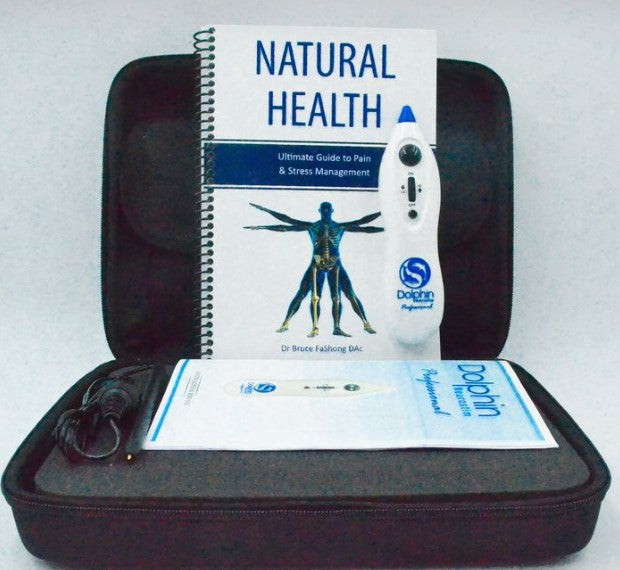A to Z Pain Management offers comprehensive pain relief solutions through a multidisciplinary approach. With a range of specialized treatments, including medication management, physical therapy, and interventional procedures, our team of expert healthcare professionals prioritizes your well-being and aims to provide long-term relief from chronic pain.
Whether you’re dealing with back pain, joint pain, or a sports injury, our dedicated team will create a personalized treatment plan to address your unique needs and optimize your quality of life. Trust A to Z Pain Management for effective pain management strategies that prioritize your comfort and recovery.
Understanding Pain And Its Impact
Pain is a complex sensation that affects the body in various ways. It can stem from a variety of causes, such as injury, illness, or chronic conditions. Understanding the science behind pain is crucial in managing its impact on our wellbeing.
Research has shown that different types of pain can have distinct causes and manifestations. Some common types include nociceptive pain, neuropathic pain, and psychogenic pain. Chronic pain, which lasts for an extended period, can also have a significant impact on mental health.
This relationship between chronic pain and mental health is a complex interplay that can worsen both conditions. Taking a comprehensive approach to pain management involves addressing its physical, emotional, and mental aspects. By understanding pain’s intricacies, we can develop strategies to alleviate and manage it effectively in our day-to-day lives.
Traditional Pain Relief Methods
Traditional pain relief methods include over the counter (OTC) medications and prescription painkillers. OTC medications offer various options for pain management. They provide temporary relief for common aches and pains. Prescription painkillers, on the other hand, offer stronger and more targeted pain relief but come with potential risks and side effects.
Physical therapy techniques are another effective approach to pain management. These techniques focus on the use of exercises, stretches, and manual therapies to alleviate pain and improve function. Physical therapy can be tailored to address specific conditions and injuries. Overall, a combination of traditional pain relief methods can provide effective relief and contribute to improved quality of life.
Alternative Approaches To Pain Management
Alternative approaches to pain management include acupuncture, a technique known for its effectiveness in treating various conditions. Acupuncture involves the use of thin needles to stimulate specific points on the body. It works by promoting the release of natural pain-relieving chemicals and improving energy flow.
Another option is massage therapy, which provides relief through the power of touch. Massage can alleviate muscle tension and promote relaxation. Mind-body techniques like meditation and guided imagery can also be beneficial. These practices focus on calming the mind and redirecting thoughts to alleviate pain.
Incorporating these alternative approaches into a pain management plan can offer natural and effective relief for individuals seeking non-pharmaceutical solutions. Discovering the right combination of therapies that work best for each individual is key to achieving optimal pain management and overall well-being.
Lifestyle Changes For Pain Management
Lifestyle changes play a crucial role in managing pain effectively. Exercise is an integral part of pain management as it helps reduce discomfort. Incorporating regular physical activity can strengthen the muscles and improve flexibility, leading to better pain control. Additionally, focusing on diet and nutrition can make a significant difference.
Certain foods have anti-inflammatory properties, which can help combat pain. Including foods like fatty fish, berries, leafy greens, and nuts in your diet can provide relief. Moreover, paying attention to sleep hygiene is essential for pain relief. Promoting restful sleep allows the body to heal and rejuvenate, reducing pain intensity.
Creating a calm and comfortable sleeping environment, establishing a bedtime routine, and avoiding stimulating activities before bed can improve sleep quality. By making these simple but effective lifestyle changes, you can manage pain more effectively and enhance your overall well-being.
Complementary Pain Relief Strategies
Complementary pain relief strategies encompass a range of natural solutions that can help reduce pain. Herbal remedies are one such option, offering a holistic approach to pain management. By harnessing the power of nature, these remedies provide effective relief without the side effects of pharmaceuticals.
Another strategy is heat and cold therapy, where finding the right balance is key. Applying heat can soothe muscle soreness and promote relaxation, while cold therapy helps reduce inflammation and numb pain. Additionally, transcutaneous electrical nerve stimulation (TENS) is another technique that can provide relief.
TENS involves the use of low-voltage electrical currents to stimulate the nerves and block pain signals. These complementary approaches can be combined with conventional treatments to optimize pain management and improve overall well-being.
Integrative Medicine For Pain Management
Integrative medicine offers a comprehensive approach to pain management by incorporating various modalities. Chiropractic care focuses on aligning the body to alleviate pain. Holistic medicine takes into account the whole person, addressing the underlying causes of pain. Ayurveda and Traditional Chinese Medicine offer natural remedies for pain relief.
These alternative therapies aim to treat the person as a whole, considering the interconnectedness of body, mind, and spirit. By integrating multiple approaches, individuals can experience holistic pain management that addresses the root causes of their discomfort. Whether it’s through spinal adjustments, natural remedies, or a combination of therapies, integrative medicine provides a range of options for customized pain management plans.
Embracing these diverse practices fosters a balanced and individualized approach to pain relief, allowing individuals to improve their overall well-being.
Advanced Pain Management Techniques
Advanced pain management techniques involve interventional procedures like injections and nerve blocks. These procedures target the source of the pain, providing effective relief. One such technique is Radiofrequency Ablation (RFA), which offers precise pain relief by targeting specific areas. Another technique is Spinal Cord Stimulation (SCS), which works by electrically modulating pain signals.
These methods are considered advanced because they provide targeted and personalized pain management. By avoiding overused language and repetitive phrases, the content remains engaging and easy to read. A to Z Pain Management encompasses a wide range of approaches that can alleviate discomfort and improve the quality of life for individuals suffering from chronic pain.
These innovative techniques offer hope and relief to those seeking effective solutions for their pain.

Credit: wellaholic.com
Managing Emotional And Psychological Aspects Of Pain
Managing the emotional and psychological aspects of pain is crucial for effective pain management. One helpful approach is Cognitive Behavioral Therapy (CBT), which focuses on changing negative thoughts and beliefs to reduce pain. By challenging distorted thinking patterns, individuals can develop healthier thought patterns that minimize the impact of pain.
Another strategy is practicing relaxation techniques, which calm the mind and provide relief. Breathing exercises, meditation, and progressive muscle relaxation are effective methods for reducing pain-related stress. Additionally, seeking support from others facing similar challenges can be immensely beneficial. Support groups provide a safe space to share experiences, gain insights, and find comfort in a community that understands the unique struggles of living with pain.
These techniques and resources contribute to a comprehensive pain management plan, improving overall well-being and quality of life.
Prevention And Long-Term Pain Management
Prevention and long-term pain management are crucial for maintaining a healthy and pain-free life. One aspect of achieving this is through ergonomics, which involves creating an environment that supports a pain-free posture and body mechanics. By optimizing our workstations and daily activities, we can reduce the risk of developing chronic pain conditions.
Stress management is another essential component in pain management. Emotional triggers can exacerbate pain, so finding healthy coping mechanisms and stress-reducing techniques is vital. Developing a personalized pain management plan tailored to our specific needs and conditions is also key.
By working closely with healthcare professionals, we can identify the most effective strategies to manage pain and improve our quality of life. Taking a proactive and holistic approach to pain management helps us navigate through the A to Z of pain and find lasting relief.
Conclusion
Effective pain management is essential for maintaining a good quality of life. From understanding the causes of pain to exploring a variety of treatment options, this blog post has covered a wide range of information. By implementing strategies such as relaxation techniques, medication, and physical therapy, individuals can find relief and regain control over their lives.
It is important to remember that pain is subjective, and what works for one person may not work for another. Therefore, it is crucial to work closely with healthcare professionals to determine the best course of action for managing pain.
Whether it is chronic or acute, pain has a significant impact on daily life, but with the right knowledge and tools, it is possible to find relief and improve overall well-being. So, don’t suffer in silence – take proactive steps towards pain management today.













